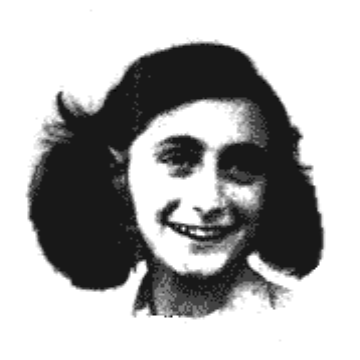
|
Frank FAQ
SIMON SHEPPARD |
Many misunderstandings and persistent myths surround the Anne Frank Diary. This page is intended to clarify some issues.
Question: Why do you criticize the Diary?
Answer: Because it is not a diary. It is an unreliable mixture of fact and fantasy which Anneliese Marie Frank wrote for her own amusement. She later described her book as a novel. It was written or re-written between 2 and 26 months after the stated entry dates.
Question: Why had the Franks settled in Holland?
Answer: German measures against Jews became increasingly severe to encourage Jews to leave. The Franks, and many of the Dutch, thought that Holland was safe from invasion because the country had remained neutral during WWI.
Question: Were the Franks wealthy?
Answer: Yes. Otto Frank’s family had owned a bank and the family were used to having servants. This also explains why there are so many photographs: photography at the time was an expensive business, which only the wealthy could afford.
Question: Was their hiding place secret?
Answer: Ostensibly yes, in practice no. There was a long list of people who knew, such as their protectors, their protectors’ associates and their vegetable suppliers. In reality it was an ‘open secret’: it seems that harbouring Jews during the German occupation of Holland was almost the Dutch national hobby. The Franks’ existence was only revealed to the occupying Germans when the tide of opinion changed.
Question: Why did the Frank family never go out?
Answer: They were afraid that the Germans would capture them. However, especially in the later years of the war, many Jews were going around completely normally, having obtained false identity papers. The reason the Franks never went out was because they looked too Jewish.
Question: Who was Kitty?
Answer: In the published Diary, all the entries are addressed to Kitty. In the manuscripts however the “letters” are addressed to various members of her “club,” which consisted of at least eight imaginary people. According to the manuscripts, Kitty had blonde hair and bright blue eyes.
Question: How did Anne Frank die?
Answer: From typhus, in one of the many typhus epidemics which raged through the camps near the end of the war. Anne’s sister Margot suffered the same fate. Their father Otto Frank was admitted to the Auschwitz camp hospital and survived.
Question: How did the group in hiding amass so much food?
Answer: Mainly through Miep Gies, who is described as being “just like a pack mule, she lugs so much.” The eight accumulated so much food that they had more to eat than Dutch people who were not in hiding!
Question: What about the ballpoint pen?
Answer: Some claim that parts of the manuscripts were written in ballpoint pen, and that such pens were not available until after the war. According to H. J. J. Hardy in the Critical Edition (p. 160) however, the only ballpoint pen in the manuscript is annotation: “The only ballpoint writing was found on two loose scraps of paper included among the loose sheets.”
Question: What about the claims that Meyer Levin wrote parts of the Diary?
Answer: This would have been somewhat difficult, since the Levin affair was around 1955 and the first edition of the Anne Frank Diary was published in 1947 (entitled Het Achterhuis: Dagboekbrieven). This persistent myth originates from an erroneous article published twice in The Spotlight.
Question: What about the vacuum cleaner and the supposed need for silence?
Answer: Some critics, notably Faurisson, have pointed to the daily use of a vacuum cleaner and that Anne Frank claimed they had to be silent for fear of discovery. The reality is that Anne was an incorrigible chatterbox and the supposed need for silence was likely to have been a device to try and keep her quiet. Since she could not talk, Anne took to writing instead. Most of what she wrote was not included in the Diary and what was published was very selectively edited.
Question: Why did the group in hiding want more people to come and live with them?
Answer: There are several references to this is the manuscripts, and the answer may be rather a mystery. It is not as if the eight in hiding had plenty of space; the proposal seems to have been to house additional people in the living room. Possibly the best explanation is that of a Jewish characteristic of accumulating in large and dense groups to feel ‘safety in numbers.’ (The word ghetto originally described a Jewish quarter.)